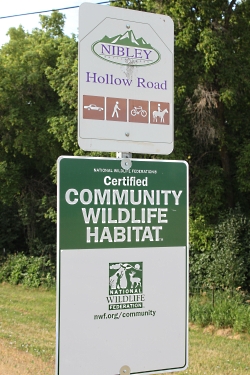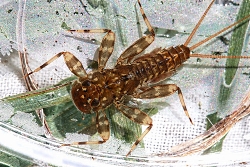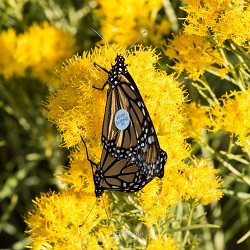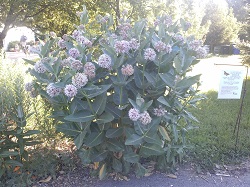
Ron Hellstern
See also:
https://www.nwf.org/Home/Garden-For-Wildlife.aspx
It is estimated that one third of the food that humans eat has been provided by small pollinators such as Hummingbirds, Butterflies, and Bees. Having these creatures in our own yards can produce hours of entertainment, and education, as we observe them working feverishly among our flowers, shrubs and trees.
Many citizens, and cities, are diligent in providing beautiful landscaped areas for these pollinators to gain nourishment as they work to increase the production of flowers and fruits.
A couple of quick tips as you decide to help these workaholic animals:
You can make your own hummingbird food by mixing one cup of sugar to four cups of water. Never put food coloring in hummingbird feeders. It can be harmful to them, and the red color of the feeder will automatically attract them. You should also use native, fertile plants in your landscaping design. And, unless you have a severe allergic reaction to bee stings, be assured that they are far more interested in gathering pollen than sacrificing their life to sting someone. Most people can work right alongside bees in their flower gardens. Wasps are another story.
So, as you design, or alter, your property to be more usable by pollinators and songbirds you can be rewarded by the National Wildlife Federation through their Wildlife Habitat Certification program. If you provide food, water, shelter and a place to raise young…you are eligible to have your yard certified. Remember, we’re not talking about Mountain Lions and Elk, just pollinators and songbirds. If you have a birdfeeder, birdbath, and shrubs or trees you qualify.
Nobody inspects your property. Go to their website at (www.nwf.org) and complete the simple application listed under Garden for Wildlife and, for a one-time fee of only $20, they will send you a personal certificate for your home, and a one year subscription to the National Wildlife magazine. They also have metal signs that you can post to show others that you care about wildlife. Once you see the value in this, encourage neighbors to do the same. In fact, you can have portions of your entire community certified as wildlife habitat as did Nibley City in Cache County. They were the first city in Utah to do so by certifying 100 properties, and they are ready to help others around the State to join them in this rewarding effort.
Next time you’re in the grocery store, or harvesting from your own garden, remember that a lot of that food would not exist without our diligent pollinators.
This is Ron Hellstern for Wild About Utah
Credits:
Images: Courtesy & Copyright Ron Hellstern
Text: Ron Hellstern, Cache Valley Wildlife Association
Additional Reading
Certify Your Wildlife Habitat, National Wildlife Federation, Accessed 20 July 2017, https://www.nwf.org/Home/Garden-For-Wildlife.aspx
Certify: https://www.nwf.org/Garden-For-Wildlife/Certify.aspx
Creating Landscapes for Wildlife… A Guide for Backyards in Utah, Written by Sue Nordstrom and Illustrated by Kathlyn Collins Department of Landscape Architecture and Environmental Planning, Utah State University with Margy Halpin, Utah Division of Wildlife Resources; Second Printing 2001,
Updated for the Utah Division of Wildlife Resources, by Frank Howe, DWR Avian coordinator; Ben Franklin, DWR–Utah Natural Heritage Program botanist; Randy Brudnicki, DWR publications editor; and landscape planning illustrations by Stephanie Duer.,
Published by:
State of Utah Natural Resources, Division of Wildlife Resources,
Utah State University Cooperative Extension Service and
Utah State University Department of Landscape Architecture and Environmental Planning;
1991 updated 2001 https://wildlife.utah.gov/pdf/landscapingforwildlife.pdf










